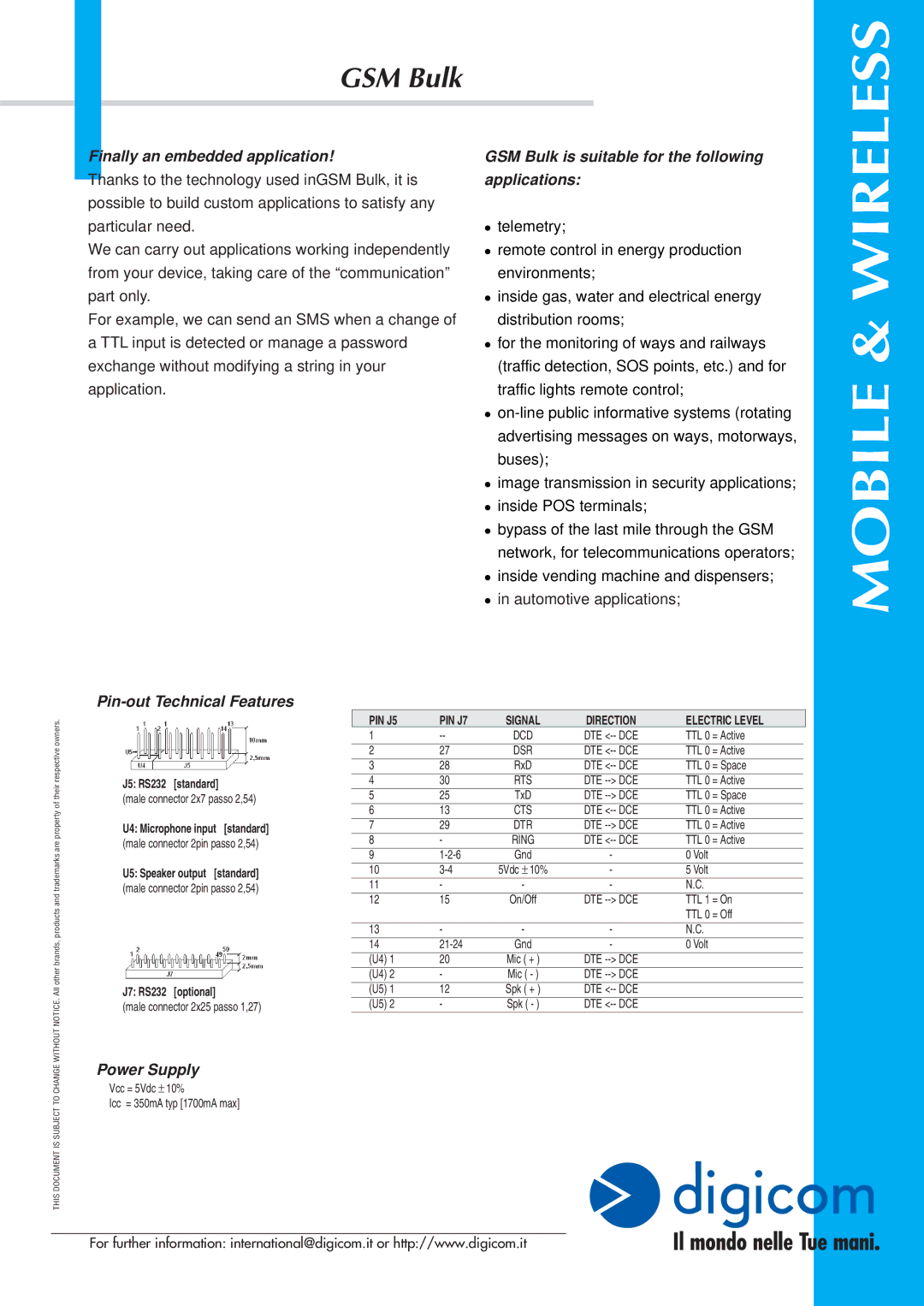DCS1800, EGSM900 specifications
The Digicom EGSM900 and DCS1800 are advanced telecommunications devices designed to operate within the specified frequency bands of GSM technology. These devices facilitate seamless communication across various applications, catering to both personal and professional needs.The EGSM900 operates within the extended Global System for Mobile Communications (GSM) frequency range of 890-960 MHz, while the DCS1800 functions within the 1710-1880 MHz range, known as the Digital Cellular System. These two bands are integral parts of the GSM architecture, which provides voice and data services to millions of users worldwide.
One of the key features of the Digicom EGSM900 and DCS1800 is their support for the GSM standard, which includes essential functionalities such as voice calling, SMS messaging, and data transmission. They utilize digital modulation techniques that enhance the quality and reliability of communication while minimizing interference and maximizing spectrum efficiency.
These devices are equipped with robust power management systems that optimize energy consumption, extending battery life and ensuring uninterrupted service. Additionally, they offer multi-channel capabilities, allowing multiple users to share the same infrastructure without sacrificing service quality.
In terms of technology, Digicom devices incorporate advanced error correction algorithms that enhance data integrity during transmission. This ensures that users receive accurate and clear communications even in challenging environmental conditions. Moreover, the devices support both circuit-switched and packet-switched data services, making them versatile for various applications ranging from voice calls to internet browsing.
The construction of the Digicom EGSM900 and DCS1800 is compact and designed for durability, making them suitable for both indoor and outdoor deployment. They are compatible with various accessories and enhancements, including external antennas, to improve signal reception in areas with weak connectivity.
Another noteworthy characteristic is their ease of integration with existing telecommunications infrastructure. This is essential for businesses looking to upgrade their systems without incurring excessive costs. The Digicom devices support various network protocols, ensuring compatibility with a range of hardware and operational environments.
In summary, the Digicom EGSM900 and DCS1800 stand out in the telecommunications landscape due to their robust features, support for GSM standards, and advanced technological capabilities. Their combination of efficiency, reliability, and adaptability make them ideal choices for users seeking high-quality mobile communication solutions.

